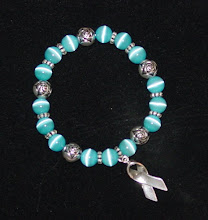
What is Mesothelioma?
Most of people known that mesothelioma is an acronym of mesothelium which is thin membranes lining the chest, lungs, abdomen and sometimes the heart. Mesothelieum protects these organs with a dual layered membrane called visceral and parietal membranes which surround organs and body cavities, such as the lungs or abdomen. The visceral membrane surrounds the organ, and the parietal membrane is a sac covering the visceral membrane. There is a lubricating fluid between it that allows the organs to move. This fluid helps organs move easily between surrounding structure and reduce friction between the lung and chest wall during normal breathing.
So What Is Mesothelioma Cancer?
Mesothelioma Cancer is a form of cancer which occurs in mesothelium. This cancer cells become abnormal and replicate without control. They will invade and damage tissues and organs and spread throughout the body causing death. It metastasizes and at an advanced stage the disease reach to the other parts of the body like the lymph nodes, lungs, chest wall, or abdominal organs. Mesothelioma cancer will cause fluid to accumulate between the lung lining and the chest cavity.The Cause of Mesothelioma CancerThere are a lot of cases that indicate the cause of mesothelioma cancer but most of them are caused by exposure to asbestos. Asbestos can be found in insulation in many buildings. Asbestos can also be found in floor tiles, roofing, dust, rocks, cement, brake linings, roof shingles, flooring products, and textiles. Asbestos consists of fibers that can enter the body through the skin, the mouth, and, subsequently, enter the lungs, or blood stream. When a person breathes in, the fibers then travel to the ends of the narrow air passages reaching the lining of the lungs and destructing the mesothelial cells (the lining of the lung cells). If swallowed, these fibers can get in to the lining of the abdominal cavity where they play a part in causing a mesothelioma cancer.
The Patients of Mesothelioma CancerPeople in the construction jobs such as in shipyards, insulation, boilermaking, milling plants, fireproofing and heating, automotive repair, and pipefitting are at the risk of contracting mesothelioma cancer. Common cases are found from workers such as Factory workers, miners, railroad laborers, gas mask makers, insulation workers and ship builders. People who have received asbestos exposure of as little as one or two months to very low doses are at risk of mesothelioma cancer. People who wash clothes of asbestos exposed people are at risk.
The Chance of Recovery
It depends on size and location of the cancer, age of the patient and their response to the treatment. According to the American Cancer Society, the five year survival rate is about 10 percent. Most patients only survive for a year after diagnosis or 4 to 24 months from the observance of the symptoms. Some physicians find it hard to detect mesothelioma cancer because its symptoms are akin to other diseases like lung cancer and pneumonia. The average age of patients is between 50 and 70 years, three-fourths of patients diagnosed are over 65.
Three Types of Mesothelioma Cancer
Primarily, mesothelioma cancer occurs in three areas, and categorized into:
1. Pleural mesothelioma (lung cancer), mesothelioma of the membrane covers the lungs and chest cavity as well as the lungs
2. Peritoneal mesothelioma (abdomen organs), mesothelioma of the peritoneum. Peritoneum is the mesothelial tissue that enfolds the organs in the abdominal cavity.
3. Pericardial mesothelioma, mesothelioma of the pericardium. Pericardium is the sac enclosing the heart.Symptoms of Mesothelioma CancerThe symptoms of mesothelioma cancer occur owing to the deposition of fluid in the pleura. The patient would generally feel a pain in the chest region, accompanied by shallow breathing.
The other symptoms are include : respiratory problem, continual cough and pneumonia, weight loss due to accumulation of fluid, abdominal problems and swelling of the neck or face, fever, anemia, difficulties in bowel movements, abnormalities observed during blood clots, fibrosis, pleural effusion, calcified plaques, bronchial cancer, and difficulty sleeping.
Article Source: http://www.articlerich.com















